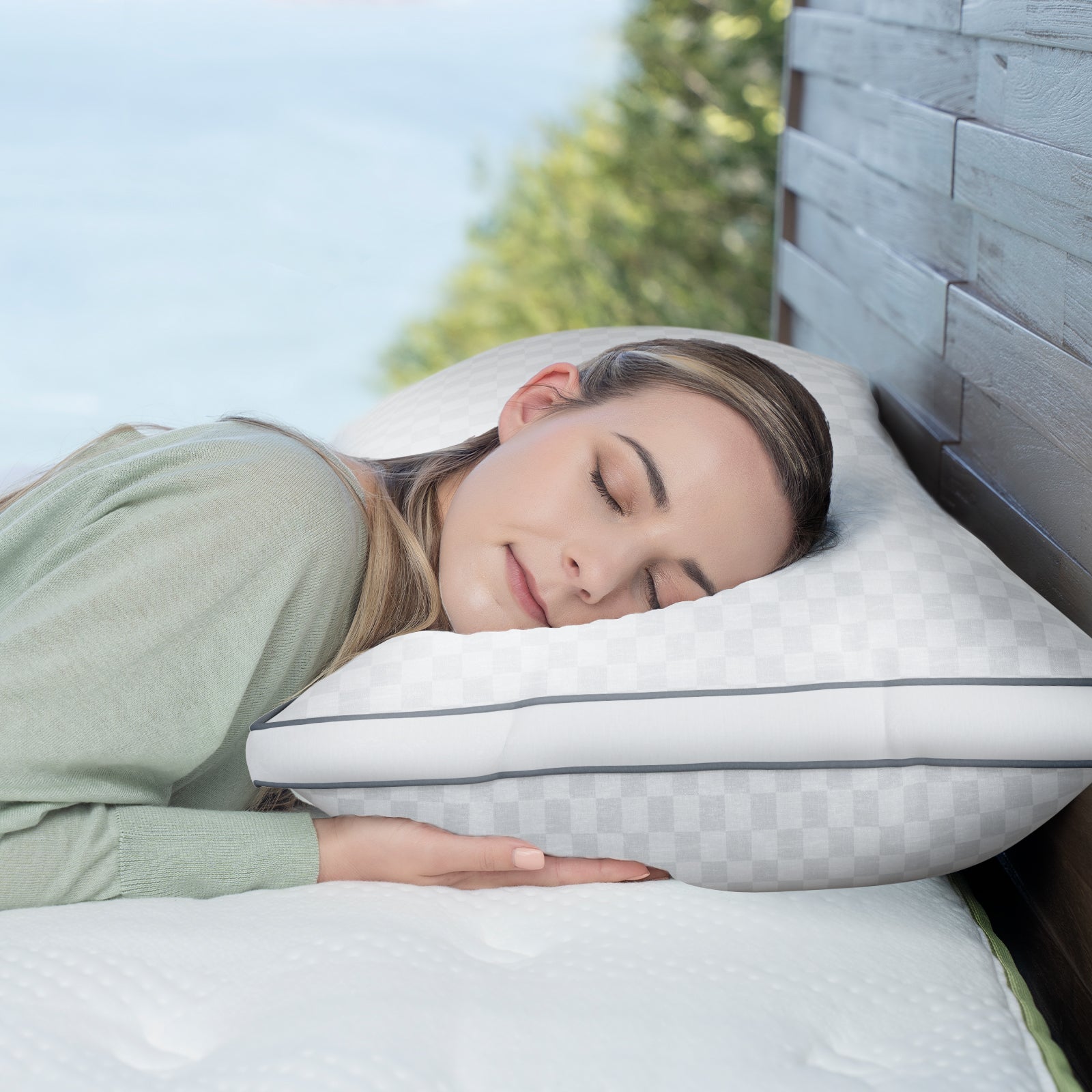No Products in the Cart
How Often Should You Replace Pillows?
As we spend a third of our lives sleeping, it's important to pay attention to the quality of our bedding, especially our pillows. Pillows not only affect the quality of our sleep but also impact our health. But how often should we replace our pillows? We have some suggestions for you!
Memory foam pillows are known for their durability and typically last five years. it's crucial to choose ones made of imported pure polyurethane foam.
Latex pillows are also long-lasting and can be used for three to four years. They have excellent elasticity, breathability, and smooth surfaces that prevent the growth of dust mites, making them ideal for people with allergies.
Down pillows, made of animal fibers, are fluffy, breathable, and comfortable. However, they're not suitable for people with allergies or those who sweat a lot. They should be replaced every two to three years and washed every one to two weeks.
Synthetic pillows are the most affordable option but need to be replaced every three months. They tend to clump over time and should be sun-dried and disinfected monthly.

When should we replace our pillow?
1.Yellow stains: Sweat and saliva allow protein to build up on your pillows, and the result is yellow stains and bacterial growth. Once you notice discoloration, it's time to replace your pillow.
2. Odors: If your pillow has a persistent unpleasant smell, it's a sign of bacterial growth and a clear indication that it needs to be replaced.
3. Uneven surface: If your pillow feels lumpy or uneven, it's lost its shape and support. This is a clear sign that it's time to invest in a new one.
Remember, a good night's sleep is essential for your health and well-being. So, if you're unsure about the quality of your pillow, it's always better to replace it sooner rather than later. Sweet dreams!
These are the signs that also remind you of replacing pillows:
1.Frequent neck pain: When you find yourself waking up with a stiff neck, or a frequent "clicking" sound in your neck, an unsupportive or uneven pillow may be one of the causes. A pillow that is too soft or too hard can cause tension and stiffness in your neck muscles, leading to discomfort and pain.
2. Skin allergies: Skin irritation: When you use the same pillow for a while and do not clean it. It can accumulate sweat, dead skin cells, and even chemicals from your skin care products. Over time, this can lead to the growth of dust mites, which can cause skin allergies and other respiratory problems.
3. Neck discomfort: A pillow that is too high or too low can cause discomfort in your neck and shoulders. If your pillow is too high, it can cause your neck to bend unnaturally, leading to stiffness and pain. On the other hand, if your pillow is too low, it won't provide enough support for your neck, causing it to strain.
To avoid these problems, it's important to invest in a good quality pillow that provides adequate support for your neck and head. Look for pillows that are made from breathable materials and are easy to clean. Additionally, consider replacing your pillow every 1-2 years, as they tend to lose their shape and support over time.

The Effects of Not Replacing a Pillow for a Long Time
1.Skin problems: Prolonged use of the same pillow is prone to various skin problems. When you sleep, harmful substances such as bacteria and dust can stick to your face. This can lead to skin infections, acne, and other facial skin problems.
2.Respiratory problems: When you breathe in, you inhale the air that surrounds you, including the harmful substances present in your pillow. Breathing in such air for an extended period can lead to respiratory diseases.
3.Neck problems: The pillow may become deformed over time, and its surface may become uneven. Sleeping on such a pillow can cause discomfort in your neck and lead to various neck problems.

Tips for Purchasing a Pillow
1. Pillow Firmness
When choosing a pillow, it's important to find one that is not too hard or too soft. A pillow that is too hard can put too much pressure on your head and neck, leading to discomfort and even pain. On the other hand, a pillow that is too soft may not provide enough support for your head and neck, causing them to sink too deeply into the pillow. Therefore, it's recommended to choose a pillow with a moderate level of firmness that can effectively reduce pressure and improve sleep quality.
2. Pillow Height
The height of your pillow is another important factor to consider when choosing the right one for you. The ideal height of a pillow depends on your sleeping position. For example, if you sleep on your back, you may need a higher pillow to keep your neck in a neutral position. If you sleep on your side, a lower pillow may be more comfortable for you. So, it's important to choose a pillow that can keep your neck in a natural position and provide adequate support.
3. Pillow Material
The material of your pillow can also affect your sleep quality. There are many different types of pillow materials available, such as synthetic fibers, down feathers, buckwheat hulls, and latex foam. Each material has its own advantages and disadvantages. Synthetic pillows are often affordable and easy to care for, but they may not be as durable as other materials. Down pillows are soft and comfortable but may trigger allergies in some people. Buckwheat and latex pillows are hypoallergenic and can provide excellent support, but they may be more expensive. So, it's important to consider your personal preferences and needs when choosing the right material for your pillow.

Different Types of Pillows and Their Characteristic
1.Down Pillow
Down pillows are made from the soft, fluffy feathers of ducks or geese. They are known for their excellent softness, insulation, and elasticity. They are lightweight and breathable, which means they won't make you feel hot and stuffy while sleeping. However, they can be difficult to clean, and some people may be allergic to feathers. When choosing a down pillow, look for one with good loft (fluffiness) that won't lose its shape over time. If you like sleeping with a slightly elevated head, consider buying two pillows with different levels of firmness and stacking them.
2.Memory Foam Pillow
Shredded Memory Foam Cooling Pillow Sleep Better With Contouring Support Based on the ergonomics and repeated tests, we finally found the perfect height for sleeping. This medium-firm pillow provides great support for your head and neck and helps you sleep deeper without neck pain.
3. Latex Pillows
Latex pillows are made from the sap of rubber trees, which are then processed and molded into a pillow shape. They are known for their softness, elasticity, and durability. Latex pillows have thousands of tiny air holes that allow for excellent breathability and moisture control. They are also naturally resistant to dust mites and other allergens. However, latex pillows tend to be more expensive than other types of pillows.
Related Posts:

How to Fold a Foam Mattress: Tips and Tricks?

Freshen Up Your Sleep: Clean Mattress Tips








